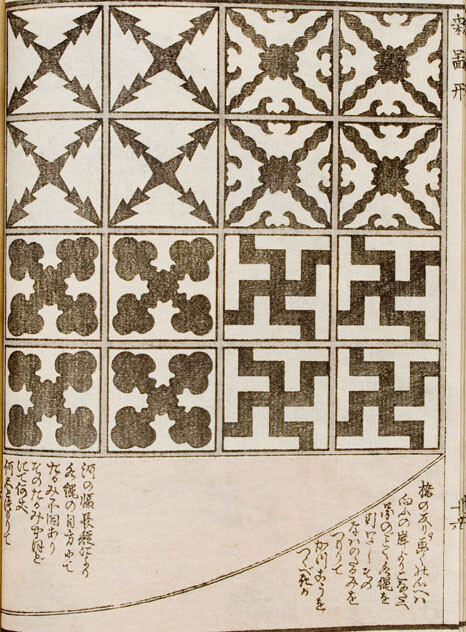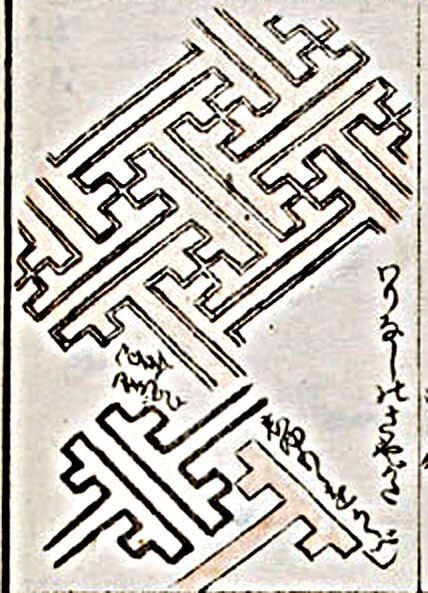-
Posts
21 -
Joined
-
Last visited
Profile Information
-
Location:
Poland
Michal's Achievements
-
Strange - I didn't get any CD with my copy ... :? But indeed, it's still great source of information!
-
Thank you Moriyama-san This is quite logic presentation. The reason for this topic was a lack of consequence amongst the authors, because in some books you can find some kakumara-gata tsuba called tatemaru, and so on. Errors or lack of mentioned consequence in our printed knowledge sources, are making more mess than anything good for terminology (I clearly realize that terminology is just a second or third important in collecting tsuba, but try to describe one properly without it!). A shape called nademaru-gata is a little mystery because each author gives different explanation: for some of them it is pure oval shape, for others "squarish circle" - which is the most often example, so it seems to be that nademaru=nadekaku. Dr John. Thank you for your answer. It is hard to discuss with pure definitions indeed. But on the other hand, isn't 1mm in possible limit of error? We can go further and stick closely to the definition, taking advanced measuring tools and count thousandth of milimetres - I'm sure we won't find maru gata at all! So I still believe that such small differences between width and lenght of tsuba, not always will make it oval. Is there any term - tatemaru or nagamaru or any other - used just for "slightly oval" shape? Regards!
-
I'm familiar with both terms: nademaru and nadekaku, and there are some glossaries/books where you can find both terms described as quite different ones. Nadekaku is often described as "a slighly oval, square shape", "rounder square shape", or "square shape with rounded corners" and I believe this shape looks like here: http://www.aoi-art.com/fittings/7600-7649/07625.html Isn't it? But I admit nademaru term is rarest from all three mentioned here. I found this term in one Polish book but also in the glossaries on www pages: http://www.shibuiswords.com/glossary1.htm and also here: http://www.nihontokanjipages.com/kanji_for_tsuba.html and few others (just type this term in google). It doesn't mean anything, while still this terms doesn't have to be right, so if you have any clue please share! Interesting is, in Polish book the shape given as Nademaru gata is indeed a "square with rounded corners"!!! and the shape on the picture above (3B) is also close to the nadekaku indeed. Regards!
-
Thank you both for reasuring me. It was quite frustrating while describing tsuba, seeing not exact explanations in few books, conflicting each other (I did not mention all books here in my post). So I started to wonder... On the other hand. I'm quite curious, when - in your opinions - we can start to call tsuba to be oval? Some of the authors are very restrictive, describing tsuba as oval, even if differences between lenght and width is of 1mm. The other ones are starting to call them oval when the difference is bigger (3-4 mm at least) - and it is a method I'm supporting, judging the shape of a tsuba not only by its dimensions, but through the overall look. What are yours opinions and methods of distinguish the small border between oval and round shape? Thank you!
-
Hello! I'm here again asking for help to spot the terms differences. This time on oval and slightly oval tsuba. There are few terms floating around, which seems to mean different shapes, but few authors seem to be treat them interchangeably So can anyone point differences between: NADEMARU GATA NAGAMARU GATA TATEMARU GATA Nademaru - "Oval shaped" (shibuiswords.com site), "(also as Nagamaru) oval shaped" Jim Gilbert's site; Nagamaru - "a tsuba plate of oval shape" (aesthetic tsuba by Haynes and Torigoye) So these two terms seems to be the same thing. But then it comes Tatemaru: Tatemaru - "Wide elliptical shape with a larger vertical diameter" (G. Heckmann, Tsuba); "Oval shape, with the vertical diameter slightly longer than the transverse one" (Dr Lissenden, Namban group..); Now there would be no serious problem, but we have three kinds of oval tsuba, and each author gives a different terms for them. How would you called each of this tsuba shapes: It would be great if someone could provide some serious source for these terms, and make it straight. Thank you in advance!
-
Back to topic just beacuse I found this. It is a capture from the youtube movie on Mongolia, where, amongst the traditional musicians, we can find a lady with an instrument decorated with sayagata pattern. I made short searching through google: this musical instrument is called yoochin. Its front pannel decoration may be varied, but googling I found another one: Just small for those who are, or will track this pattern around the world. Regards
-
Thanks, and sorry for misunderstanding Regards!
-
It seems to be a common term used for the sukashi in the form of mon. Both books mentioned at the top of this thread seems to confirm it: Hawley: Aestethic Study: It is clear so far - the problem, as I understand, how to distinguish if the motif is MON or not, what can be hard if it is treated lightly, as a decoration, not made literally heraldic Moriyama - thank you very much for this papers. I'm not quite sure if understand you well - do you suggest using yo-sukashi term when the motifs are made in kage-sukashi on tsuba aswell, in the same time?
-
Thank you once again, your explanation sounds quite logic (I never heard of Ki-sukashi!). It is still strange to me, that there are so many differences or misunderstandings in explanation of this basic techniques by the authors. Anyway, one lesson I learned, it is better to use ji-sukashi term as a description of the positive silhouette without getting involved deeper in to any classifications (I tried to be "more royal then the king"). One more question, if you allow me: how does it look on original NBTHK papers? Do they use only ji-sukashi term or can one find yo-sukashi and kage-sukashi terms as well on their papers? Thank you in advance!
-
On the other hand word "kage" means "shadow" so your example would be fine then, but what we would call ko-sukashi then ? Or when ko-sukashi (as a small-sukashi) ends and where kage-sukashi begins? To make it clear: do you think the insects below are made in yo- or kage-sukashi? In my opinion it would be a kage-sukashi (this is what I thought anyway, until today )
-
Thank you for the replies. Morimaya - the example you posted as a kage-sukashi, according to quoted glossaries, would be KO-SUKASHI, because in a matter of fact, larger part of surface is left on tsuba and only smaller amount of surface was removed.
-
Hello! Going through many books, web sites and glossaries I tried to figure out the classification and terminology of open-work techniques applied to Japanese tsuba - sukashi. There are few books and web sites with quite vast glossaries, but I found that hardly ever glossaries are unanimous: - W.M. Hawley, 600 Japanese Sword Fittings Terms - Kazutaro Torigoye, Robert E. Haynes, Tsuba. An Aesthetic Study and websites: - Tsuba terms: http://home.earthlink.net/~jggilbert/glossary.htm - Glossary for Tsuba: http://www.shibuiswords.com/glossary1.htm - Nihonto-no-bi (Various Sukashi): http://www.users.on.net/~coxm/7.%20tsuba%20i.html The problem is with ji-sukashi – the openwork where a large amount of ground is removed, leaving design in positive relief. There is no problem with ko-sukashi at all, where all authors are unanimous. Ji-sukashi – some of the authors do not even mentioned this technique in their works, like Hawley (who sees kagesukashi called also akasaka sukashi instead of this). In An Aesthetic Study you’ll find the term, but only in text, not in the glossary, recognized as a “positive silhouetteâ€, and other web glossaries are repeating this term as well. That would be fine and I believe tsuba on the picture below is made with ji-sukashi method, according to these glossaries: But some authors (Glossary for tsuba, Nihonto-no-bi) are going even further and are dividing ji-sukashi on two other techniques: yÅ-sukashi – what would be a positive silhouette in ji-sukashi method, and kage-sukashi – what would be a form of negative silhouette in ji-sukashi method, looked like outline or sketch of the motif. According to that, we would have two other techniques like in tsuba here: The problem is that very few authors I could reach, mentioned both techniques, especially yÅ-sukashi is rare (even googling), while kage-sukashi is mentioned by Hawley as a “shadow technique†what is a little hard to interpret, if does he meant positive or negative (outline) technique. I would be very glad if someone more knowledgeable could make it clear, or give other ways of interpret these methods, raising a discussion , if these terms are correct or not. Polish books on tsuba (there are only two so far) are making even more mess in this matter, so I won’t even mention them. Regards!
-
You're welcome, just do let me know
-
-
Hey! I was joking of course but this suggestion with lock motif is really interesting. I used to interpreting this motif as a lattice / railing / or just something like garden pole on a lattice. Ok, here is something much more serious and not offtopic. A pattern from Japanese sketch book. Unfortunately I don't have any better picture, nor possibility to read the letters around it. Regards!




